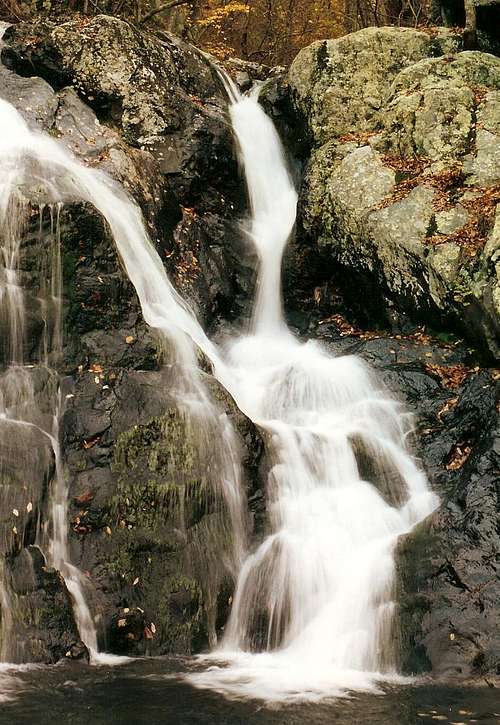-
 14937 Hits
14937 Hits
-
 73.06% Score
73.06% Score
-
 3 Votes
3 Votes
|
|
Route |
|---|---|
|
|
38.54030°N / 78.3497°W |
|
|
Hiking |
|
|
Spring, Summer, Fall, Winter |
|
|
Half a day |
|
|
Class 1-- steep at times |
|
|
Overview
Overview
This is arguably the most spectacular loop trail in Shenandoah National Park, matched only by the one on Old Rag. While this loop does not offer the rock scrambling and summit views found on Old Rag, it does serve up several waterfalls, some of which are among the park's prettiest and, after wet periods, most spectacular. In all, there are 7 waterfalls right along the trails or easily visible from them (3 on Cedar Run, 4 on Whiteoak Run), and Whiteoak Run has two more that are hard to see from the trail but are accessible via quick scrambles. Also, the falls on Negro Run are a short bushwhack and scramble away from Whiteoak Run near the last of its waterfalls. Spring wildflowers and fall foliage are gorgeous in these canyons, and winter brings dramatic ice formations.
Mid-fall through early spring are the best times to go. You will avoid the summer humidity that way. Winter may be the best time of all, as it is quiet, the air quality is usually pretty good, and ice often decorates the streamside rocks and cliffs (and sometimes the waterfalls freeze completely over).
Getting There
At Sperryville along U.S. 211, look for signs indicating 522 and 231 and follow the directions to them. Turn right on 231. You can also reach 231 via 522 from Culpeper, and you can take 231 all the way from Charlottesville. After about 10 miles along 231, you reach a tiny town called Etlan. Look on the east side of the road for a small convenience store. Directly across the road from the store is SR 643. There should be a sign indicating access to Whiteoak Canyon. Follow this road for about 4 miles until you reach a stop sign. Turn right (a sign for Whiteoak Canyon should confirm this). You are now on SR 600, and it takes you all the way to the signed parking area and trailhead, almost at the very end of the road. Instead of turning into the parking area, continue straight for about 0.8 mi to the end of the road, which is where the Berry Hollow Fire Road begins. It is about 5 miles from the junction of 643 and 600 to the trailhead, and the drive takes about 15-20 minutes.
Route Information
RT distance 8.3 miles; elevation gain approximately 2650'.
This route can be hiked in either direction. I prefer going up Cedar Run and down Whiteoak Run because that way features more downhill hiking. Consider, though, that Whiteoak Canyon is one of the most popular places in the park, so unless one starts very early, he or she might want to head up Whiteoak first in order to minimize exposure to crowds.
From the trailhead, hike for 0.2 mi along the Whiteoak Canyon Trail to its intersection with the Cedar Run Trail, which climbs 3.1 mi to Hawksbill Gap. At 0.8 mi from the trailhead, there is a stream crossing that is often tricky due to very slippery footing. The trail climbs steeply after this ford, passing three waterfalls, best viewed via short scrambles but still visible from the trail. The uppermost cascade is about 2.2 mi from the parking area.
0.1 mi before Hawksbill Gap, the Cedar Run Trail intersects the Skyland-Big Meadows Horse Trail. Turn right and follow this trail (watch where you step) for 0.5 mi to an intersection with the Whiteoak Canyon Fire Road. Turn right and follow this path (the fire road and horse trail are one here, so continue watching where you step) downhill for 1.6 mi to a ford of Whiteoak Run just above the uppermost waterfall of Whiteoak Canyon. After the ford, turn right onto the Whiteoak Canyon Trail and follow it for 3 mi back to the parking area. Some downhill sections are steep and rocky, and the trail can be muddy in places; watch your footing.




